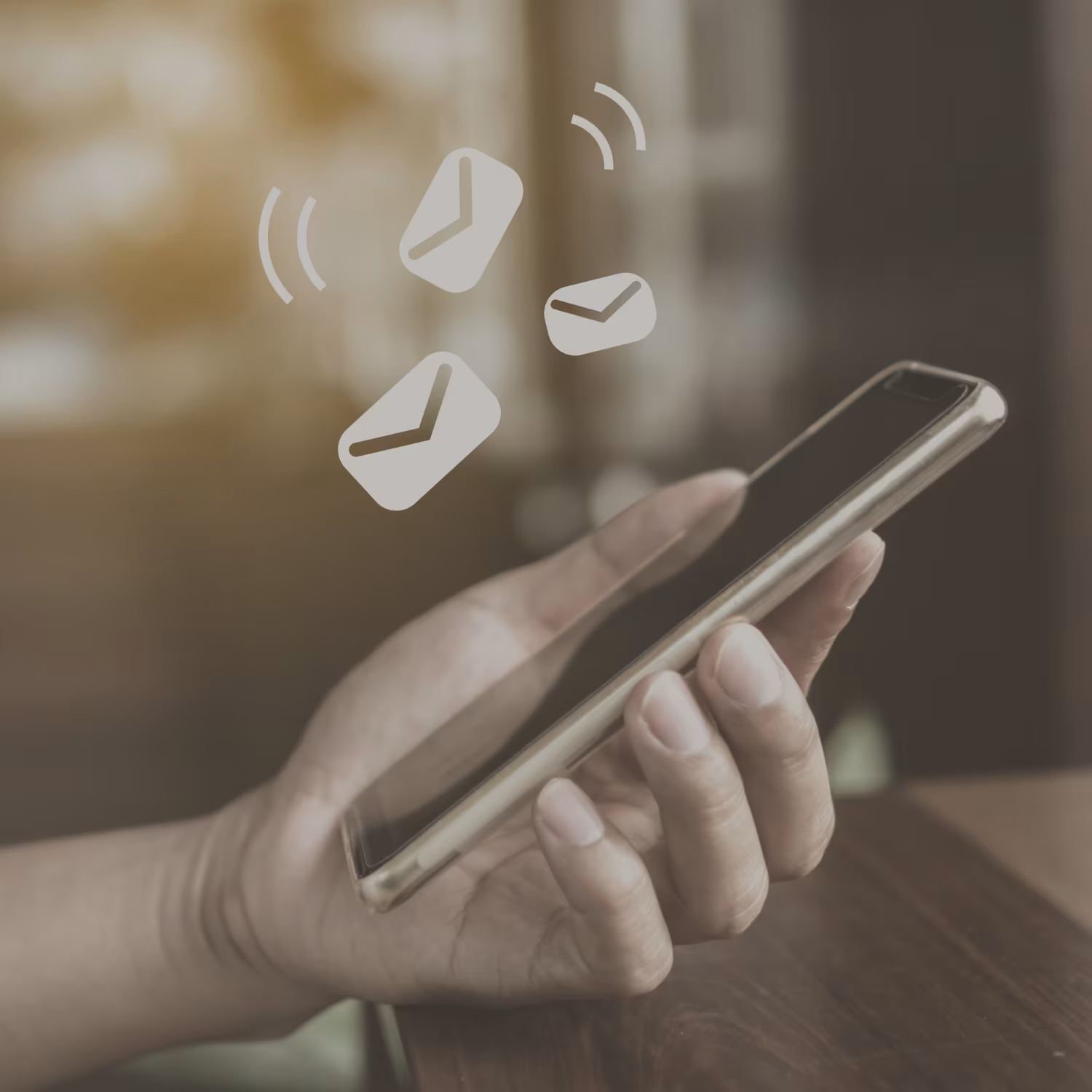HIPAA Compliant Push Notifications: The Ultimate Guide for Healthcare in 2025


HIPAA Compliant Push Notifications: The Ultimate Guide for Healthcare in 2025
HIPAA Compliant Push Notifications: The Ultimate Guide for Healthcare in 2025
In today’s digital-first world, patients expect the same level of convenience from their healthcare providers as they do from retail or banking. Instant updates, timely reminders, and seamless communication are no longer optional—they’re essential for patient engagement and retention. Push notifications are a powerful tool to deliver this experience, but for healthcare organizations, they come with a critical challenge: the Health Insurance Portability and Accountability Act (HIPAA).
Navigating the complex landscape of HIPAA while trying to implement modern communication strategies can be daunting. A single misstep can lead to severe penalties and a devastating loss of patient trust. This guide provides a comprehensive blueprint for implementing HIPAA compliant push notifications in 2025, empowering you to enhance patient communication securely and effectively.
Understanding the Stakes: What is HIPAA and Why Does It Matter for Push Notifications?
HIPAA is a US federal law designed to protect sensitive patient health information from being disclosed without the patient’s consent or knowledge. It sets the standard for data privacy and security in the healthcare industry. The two most relevant components for digital communications are:
- The HIPAA Privacy Rule: Establishes national standards for the protection of individuals’ medical records and other individually identifiable health information.
- The HIPAA Security Rule: Sets standards for securing electronic protected health information (ePHI) when it is at rest or in transit.
PHI vs. ePHI: The Core of HIPAA Compliance
At the heart of HIPAA is the concept of Protected Health Information (PHI). PHI is any individually identifiable health information, including demographic data, that relates to an individual’s past, present, or future physical or mental health or condition. When this information is created, stored, or transmitted in electronic form, it’s called electronic PHI (ePHI).
Examples of PHI/ePHI include:
- Patient names, addresses, or birth dates
- Medical record numbers
- Diagnoses or treatment information
- Test results or lab reports
- Appointment dates and times related to a specific condition
Any digital communication tool, including push notifications, that handles ePHI must adhere to the strict technical, physical, and administrative safeguards outlined by the HIPAA Security Rule.
The High Cost of Non-Compliance
The consequences of a HIPAA violation are severe. The U.S. Department of Health and Human Services (HHS) can impose significant financial penalties, ranging from thousands to millions of dollars per violation. Beyond the fines, a data breach can cause irreparable reputational damage, erode patient trust, and lead to costly corrective action plans.
Are Push Notifications Inherently HIPAA Compliant? (The Short Answer: No)
Standard push notification services, such as Apple’s Push Notification Service (APNs) and Google’s Firebase Cloud Messaging (FCM), are not HIPAA compliant out of the box. These services are designed as “best-effort” delivery systems and do not provide the necessary controls, encryption, or auditing capabilities required to protect ePHI. They are essentially a public channel.
This does not mean you can’t use push notifications. It means you must implement them within a carefully designed, secure ecosystem. Compliance isn’t about the notification message in isolation; it’s about the entire workflow—from the server that sends the message to the app that receives it and the third-party vendors involved.
The Blueprint for Compliance: 7 Essential Requirements for HIPAA-Compliant Push Notifications
To build a compliant push notification strategy, you must adhere to a strict set of technical and procedural safeguards. Follow this blueprint to ensure your patient communications are secure.
1. Absolutely No ePHI in the Notification Payload
This is the golden rule. The message content that appears on a user’s lock screen or notification tray must never contain any ePHI. These messages are transmitted through public channels (APNs/FCM) and can be easily exposed. Keep messages generic and non-specific.
- BAD Example: “Reminder: Your cardiology appointment with Dr. Smith is at 2 PM today.”
- GOOD Example: “You have an upcoming appointment. Please open the app for details.”
- BAD Example: “Your lab results for your cholesterol test are now available.”
- GOOD Example: “You have a new message in your secure patient portal.”
2. End-to-End Encryption (E2EE)
While the notification itself should be generic, the data moving between your servers, your push notification provider, and your application must be fully encrypted. This includes encryption in transit (using protocols like TLS 1.2 or higher) and encryption at rest (when data is stored on servers or databases).
3. Secure, Authenticated Landing Zones
The purpose of a compliant push notification is to prompt the user to take an action within a secure environment. When a user taps the notification, it must deep-link them directly into your secure mobile app or patient portal, which must require authentication (e.g., password, PIN, or biometrics like Face ID/fingerprint) before displaying any ePHI.
4. Strict Access Controls & Identity Verification
On the backend, you must implement strong access controls to ensure that only authorized personnel can create and send patient notifications. Role-Based Access Control (RBAC) is critical, limiting access to patient data and communication tools on a need-to-know basis. Every user action should be tied to a unique, identifiable user.
5. Comprehensive Audit Trails and Logging
The HIPAA Security Rule requires organizations to maintain audit logs of all access and activity involving ePHI. Your push notification system must be capable of logging every message sent, including timestamps, sender information, recipient, and delivery status. These logs are essential for security reviews and breach investigations.
6. A Signed Business Associate Agreement (BAA)
If you use a third-party vendor (like indigitall) to send push notifications, they are considered a “Business Associate” under HIPAA. You are legally required to have a signed BAA with them. A BAA is a contract that obligates the vendor to maintain the same high standards of ePHI protection that you do. Never partner with a vendor that is unwilling to sign a BAA.
7. Secure Data Deletion and Disposal Policies
Your systems must include secure procedures for disposing of ePHI when it is no longer needed. This applies to data on your servers, within your vendor’s platform, and on user devices. Ensure your policies align with data retention requirements and HIPAA standards for secure deletion.
Strategic Use Cases: How to Leverage Compliant Push Notifications in 2025
When implemented correctly, HIPAA-compliant push notifications can revolutionize patient engagement. Here are some powerful use cases for 2025:
- Appointment Reminders: Drastically reduce costly no-shows by sending generic reminders that prompt patients to check their secure portal for details.
- Medication Adherence: Improve patient outcomes with simple, non-specific reminders like, “It’s time for your evening medication. Open the app to log it.”
- Lab Result Availability: Speed up communication and reduce administrative overhead by alerting patients the moment their results are ready with a message like, “Your recent lab results are available. Tap to view securely.”
- Billing & Payment Alerts: Streamline the billing process by notifying patients, “You have a new statement available in your patient portal.”
- General Health & Wellness Education: Engage patients proactively by sharing links to non-sensitive content like blog posts, health tips, or flu shot reminders.
- Telehealth Notifications: Ensure timely starts for virtual appointments with alerts like, “Your telehealth appointment is starting in 15 minutes. Please log in now.”
Choosing the Right Partner: What to Look for in a HIPAA-Compliant Communication Platform
Building a compliant system from scratch is complex. Partnering with a communication platform that understands the nuances of healthcare is crucial. Here’s what to look for:
- Willingness to Sign a BAA: This is the non-negotiable first step. If a vendor hesitates, walk away.
- Robust Security Infrastructure: Inquire about their security posture, including encryption protocols, data center certifications (e.g., SOC 2, ISO 27001), and vulnerability management.
- Detailed Audit Logs: The platform must provide you with accessible, comprehensive logs for all communication activities.
- Granular User Controls: Ensure the platform supports RBAC and allows you to manage permissions for your team effectively.
- Expert Support: Your partner should be a resource, offering guidance on implementing compliant communication strategies.
Frequently Asked Questions (FAQ)
Q1: Can I send a patient’s name in a push notification?
No. A patient’s name, when combined with any healthcare-related context (like a clinic’s name or a mention of an appointment), is considered PHI and should never be included in the visible payload of a push notification.
Q2: What about using SMS instead of push notifications?
Standard SMS text messaging is not encrypted and is not a HIPAA-compliant channel for transmitting ePHI. Like push notifications, SMS can be used to send generic alerts that direct a user to a secure portal, but it lacks the rich, interactive capabilities of in-app messaging.
Q3: Does using a compliant vendor make my entire organization automatically compliant?
No. HIPAA compliance is a shared responsibility. While a compliant vendor provides the necessary secure technology, your organization is still responsible for its own internal policies, staff training, access controls, and how you use the platform.
Q4: How do I get patient consent for push notifications?
Consent should be an explicit opt-in process, typically during the mobile app onboarding or through patient portal settings. You must clearly explain what types of notifications patients will receive and give them the ability to manage their preferences easily.
Conclusion: Engage Patients Securely and Effectively in 2025
HIPAA compliant push notifications are not just a possibility; they are a strategic imperative for modern healthcare organizations. By adhering to the core principles of data minimization, robust security, and shared responsibility, you can leverage this powerful channel to improve patient engagement, streamline operations, and deliver better health outcomes. The key is to build a strategy founded on security, partnering with technology that understands and respects the critical importance of patient data privacy.
Ready to implement a HIPAA-compliant patient communication strategy? Discover how indigitall’s secure, omnichannel platform can help you connect with patients while ensuring total data privacy and compliance. Contact us today for a demo.











